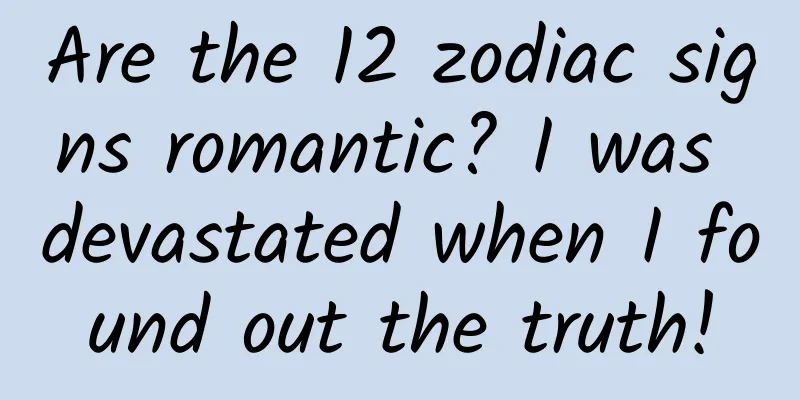In Xi'an, looking forward to Chang'an!

|
One day in the 8th century A group of Sogdian merchants set out from Samarkand Their journey this time spanned more than 2,000 kilometers in space. Spend a year on time They are dusty, but their eyes are bright. Because they will finally see the prosperity of the Tang Dynasty Meet Changan Heard The emperors of the prosperous Tang Dynasty enjoyed the homage of envoys from "all nations" The streets of the prosperous Tang Dynasty gathered all the treasures of the world. Life in the heyday of the Tang Dynasty set a benchmark for international fashion And bringing it all together Chang'an (Please watch in horizontal mode, Chang'an Life Picture Book, this picture is an artistic mosaic of three themes of Chang'an, not a real space layout, drawn by @阿土/星球研究院) ▼ Today There are still countless people coming to Xi'an Exploring the Lights and Shadows of the Prosperous Tang Dynasty The vitality of the Tang Dynasty Actively in the arbitrary time slices in Chang'an It is the inclusive empire in the eyes of the courtiers at Mao time It is the lively capital behind the bustling market at noon. It is a feast of bliss in the suburban gardens at the hour of You 01 The Empire of Inclusion Mao time, Hanyuan Hall, Daming Palace, Chang'an Emperor Xuanzong of Tang wearing imperial robes and imperial crowns Civil officials, military generals, and envoys from various countries stood outside the palace Waiting to toast the emperor The Tang Dynasty has seen such moments many times. It is used to accommodating thousands of (Tang Dynasty pottery and wooden figurines, each with a different face, tell people about the all-encompassing Tang Dynasty. Photographers @朕忠&Sing行摄影, map @阿容/星球研究院) ▼ The Tang Dynasty was a mixture of nomadic peoples and traditional culture of the Central Plains This makes it inclusive It's engraved in our bones. After that, the country became stronger and stronger With the reopening of the Silk Road Countless merchants, monks, and students came to the land of the Tang Dynasty. Accompanying them It is a foreign culture that is very different from the Central Plains Tang's tolerance It is to absorb and transform these cultures without any scruples. (Zhigongtu, attributed to Yan Liben of the Tang Dynasty, now in the collection of the National Palace Museum in Taipei, image source @Wikimedia commons, map @Arong/Planet Research Institute) ▼ Foreigners who came to the land of the Tang Dynasty Can be an official, can do business Can take science exams, can intermarry Kang Qian is a typical example He was a merchant in Samarkand He counterattacked and became the Minister of Rites This was a position equivalent to today's Minister of Foreign Affairs. There are many examples like Kang Qian. Abe no Nakamaro Choi Chi-won of Silla Li Yansheng of the Arab world … According to statistics Among the six prime ministers in the late Tang Dynasty There are five people who were born as Hu people. (A copy of the Japanese "Kibi Minister's Journey to Tang Dynasty", the original is kept in the Boston Museum of Fine Arts. The image of the Tang people depicted in this painting is very controversial. Image source @ColBase, map @Arong/Planet Research Institute) ▼ Thanks to the developed transportation Luoyang, the Eastern Capital The swarming caravan kicked up the dust on the ground "Ever since the Hu cavalry raised dust, the smell of hair and fur filled the Xianluo River." (Three-color camel figurine carrying cargo, the above is from Yuan Zhen's "Twelve New Yuefu Poems in Response to Li Xiaoshu·Faqu", photographer @胡繎, map @阿容/星球研究院) ▼ Yangzhou in the South By the canal Merchants gather here, and the market is connected Chengdu in the southwest Relying on the developed handicraft industry Second only to Yangzhou in terms of wealth It was called "Yang Yi Yi Er" (Under the ancient Xi'an city wall are trains ready to go. The former carriages and horses have now become roaring trains. Photographer @许健雄) ▼ Continue south to Guangzhou , a city far away from home Facing the sea, goods are shipped all over the world Countless overseas merchants gather here The remote town has become a major port in the East All the treasures from all over the world gathered in Chang'an Some gold and silver wares with Western style The pattern is unique and eye-catching (A finely crafted gold ware from the Tang Dynasty, photographer @路客看看&Sing行摄影&脉影, map by @阿容/星球研究院) ▼ Integration is not one-way The civilization of the Tang Dynasty also continued to spread to the surrounding areas Tea, silk, porcelain, bronze mirrors Representing Datang Meteorological Products exported overseas (Bronze mirrors and porcelain from the Tang Dynasty, photographer @笑谈间气吐霓虹&脉影, map @阿容/星球研究院) ▼ Yangzhou felt hats are so popular that they are hard to find Yangzhou bronze mirrors become a great gift Chengdu's hemp paper has become the best paper So the four books of the government were all printed on Yizhou hemp paper. (The Yangtze River Heart Mirror unearthed from the Black Stone Ship is named after the Yangtze River Heart Mirror, which is cast on May 5th every year. Photographer: @苏李欢, map by @阿容/Planet Research Institute) ▼ There are also white porcelain from Xingzhou and celadon from Yuezhou Tea from Huzhou, silk from Zhengzhou Busy trade, a wide variety of goods This is the best footnote to the inclusive empire. Traveling by car, horse and boat, going south and north Travelers on the road in the territory of the Tang Dynasty Sketching a vibrant picture The center of the painting is Chang'an 02 The living capital Noon, West City The door of Changan Market slowly opens The merchants flocked to the place and the camel caravans waited for a long time. The shouts and yells instantly ignited the West Market. This is the scene that happens every day in Chang'an's market. Half solemn, half lively (Please watch in horizontal mode, a schematic diagram of Tang Chang'an City, drawn by @阿容/Planet Research Institute) ▼ Fertile soil of Guanzhong Plain Nourished by the Qin and Han dynasties This magnificent capital city grew up When Chang'an City was first built, it was called Daxing City. It was renamed Chang'an in the Tang Dynasty The Daming Palace was built in the northeast corner. It became the Chang'an we are familiar with today. (Sketch of Chang'an City's location and topography, drawn by @昕恬/Planet Research Institute) ▼ The grand scale gives Chang'an City solemnity and majesty It not only has an area of 84 square kilometers Surpassing all previous capitals It is also unique in its construction design. It founded the Imperial City It formed a triple city of palace, imperial city and outer city. Clear functional division Since the Sui and Tang Chang'an City Many capital cities thereafter adopted the layout of three cities within one another. (Schematic diagram of the three-layer city of Chang'an, drawn by @阿容/Planet Research Institute) ▼ The three cities are connected in series The streets that crisscross the city Six of the streets start from the east, west and south city gates. Known as " Sixth Street " These six streets are the main transportation hubs of Chang'an City. It is also the "metronome" of Chang'an City. It reflects its vivid and lively side (Sketch of the Six Streets of Chang'an City, drawn by @阿容/Planet Research Institute) ▼ During the reign of Emperor Taizong , street drums were set up in the six streets Accompanied by the sound of drums The city gates, town gates, and market gates are opened in the morning and closed in the evening. Chang'an City is also in the sound of drums Repeated cycle of bustle and silence (Diagram of the night curfew system, drawn by @阿容/Planet Research Institute) ▼ Overlooking the whole city The most eye-catching is the Suzaku Street in the center It starts from Zhuque Gate in the north and connects to Mingde Gate in the south. Width up to 150 meters There are ditches dug on both sides of the street Facilitates rainwater drainage Sophora japonica trees are planted on both sides of the street to provide shade and coolness. Therefore, Zhuque Street is also called "Huai Street". (Please watch in horizontal mode, Schematic diagram of Zhuque Street, drawn by @阿容/Planet Research Institute) ▼ Zhuque Street is not only the widest main street in the city It is also the central axis of the city. With Suzaku Street as the axis The Lifang is arranged symmetrically on both sides. (Please watch in horizontal mode, the model of Chang'an City Lane in Xi'an Museum, photographer @李文博, map @杜睿/Planet Research Institute) ▼ More than just Lifang The city management is also symmetrical. Bounded by the street The west of the street belongs to Chang'an County, and the east of the street belongs to Wannian County (Some administrative agencies of Chang'an City indicated that in actual management, the jurisdiction of Chang'an and Wannian County also includes the suburban areas outside the city walls. Map by @阿容/星球研究院) ▼ More importantly This street is also a " ritual axis " There were many ritual activities in the Tang Dynasty The most grand ceremony is to worship the Lord of Heaven. The venue is the Circular Mound of the Temple of Heaven outside the city. The Circular Mound has four levels and the altar is 8 meters high. It is the earliest existing building for the emperor to offer sacrifices to heaven in China. More than 1,000 years earlier than the Temple of Heaven in Beijing Known as " the best altar in the world " The exquisite design of the Circular Mound is amazing The 12 steps represent the twelve hours of the day. The ratio of the radii of the three circles when looking down at the inner side of the altar It just fits the ancient universe model of "three circles and three squares" (Temple of Heaven in Sui and Tang Dynasties, Photographer @一佳, Map @阿容/Planet Research Institute) ▼ Every winter solstice day, worship the heaven The emperor brought his civil and military officials Crossing Suzaku Street To the Temple of Heaven in the southern suburbs Fireworks rise, drums and music Sui and Tang Dynasties A total of 21 emperors were worshipped in the southern suburbs Here, I offer sacrifices to the heavens (Today's Temple of Heaven Ruins Park in Xi'an, photographer @薛飞) ▼ “Every city has a theme. It is often represented by a central street. Zhuque Street is the best embodiment of Chang'an City It is grand and orderly, reflecting the spirit of the royal capital. Morning and evening street drums and ritual activities It also inspires the lively life of Chang'an The inclusive empire built a vibrant capital Under the lively capital It is a feast of bliss composed by thousands of people in Chang'an 03 A feast of bliss 5:00 pm, Qujiang Pedestrians either stop to watch or sit in a circle. The towering buildings and the majestic mountains surround this place. Amid the bustling capital, one can also see the misty waters This is the other side of Chang'an away from the center Comfortable and unrestrained, elegant and open (The Qujiang Map painted by Li Zhaodao in the Tang Dynasty depicts the prosperous scene of Qujiang in the Tang Dynasty. Image source: Taipei National Palace Museum) ▼ Tea This drink, which is now represented by elegance, It flourished during the Tang Dynasty The Classic of Tea, the earliest Chinese tea monograph Also born at this time Because of the admiration of the tea brewing method by the tea saint Lu Yu The matter of drinking tea Become more sophisticated and elegant (The process of drinking tea by brewing tea in the Tang Dynasty, drawn by @王天怡&王申雯&阿蓉/Planet Research Institute) ▼ Tang people drank tea while playing chess (Detail of the Tang Dynasty silk painting "Ladies Playing Chess", the woman holding a teacup, photographer @柳叶氘, map @王申雯&阿容/Planet Research Institute) ▼ Drink tea when you are debating with others (Please watch horizontally, a Ming Dynasty copy of Yan Liben's "Xiao Yi Earns the Lanting Pavilion" from the Tang Dynasty (partial), two servants in the picture are making tea, photographer @柳叶氘, map @王申雯&阿容/星球研究院) ▼ Tea has flowed into the blood of the Tang people If tea represents the reserved and elegant side of the Tang people Then wine is the other side of heroic spirit "When life is good, enjoy it to the fullest, don't let the golden cup face the moon empty" The golden cups of the Tang people never disappoint the moon Jiannan Shaochun, Yingzhou Fushui, Chang'an Xishi Dialect There are also fine wines and Sanle juice The Prosperity and Frustration of the Tang People All poured into the nectar (The mural "Maidens Holding Pots and Cups" unearthed from the tomb of the Grand Princess Fangling, the above is from Li Bai's "Drinking Wine·Don't You See", photographer @老土豹孙岩, map @阿容/星球研究院) ▼ The vitality of a dynasty Not only in the cups And overflowing from the hem of the skirt Women in Chang'an can be said to be "fashion bloggers" who lead the trend In the Tang Dynasty, women lifted their skirts to their armpits. Wearing a short jacket and a long skirt The skirts are colorful, among which the red pomegranate skirt is the most popular (Part of "Lady with Flowers in Her Hair", image source @Wikimedia commons, map by @阿土&阿容/Planet Research Institute) ▼ The neckline of the short jacket is also complex and varied Round neck, square neck, sweetheart neck The neckline styles that are popular now were already popular at that time Women gave Hu clothing another kind of vitality Women in the Tang Dynasty could wear gorgeous clothes It can also withstand the Hufu men's clothing They follow their hearts and gallop on horseback Isn't this the best proof of the vitality of the Tang Dynasty? (A Tang Dynasty painted female figurine wearing a peacock crown and riding a horse and beating a waist drum, now in the collection of the Xi'an Museum. The female figurine wears a peacock crown and beats a waist drum. Photographers @老土豹孙岩&Sing行拍, map @阿容/星球研究院) ▼ Gathering is a form of entertainment that is popular among the Tang people. At that time, the gathering was called " banquet " A country's microcosm is reflected in the drinking and chatting Brew a pot of good tea and sip it slowly There is a wonderful sound of stringed instruments in my ears Whether it is a local or foreign musical instrument It had a place at banquets in the Tang Dynasty. ("Tang Dynasty Palace Music Picture", some scholars believe that in addition to drinking tea, alcohol was also consumed during the banquet, image source @Wikimedia commons, map @阿容/星球研究院) ▼ In addition to indoor gatherings Tang people also like to have fun and dinner outdoors It was called " Yuanyan " at that time. Qujiang was a popular place for tourists and banquets in the Tang Dynasty. Qujiang was originally a natural pool The river is winding, like the river in Guangling, hence the name Qujiang. The Sui and Tang dynasties transformed it Pavilions, towers, bridges, boats and cars are dotted in between. It's really picturesque. (Today's Ziyun Tower in the Tang Paradise in Xi'an. It is recorded that Emperor Xuanzong of Tang ascended this tower to entertain his ministers during the Qujiang Conference. Today's Ziyun Tower is an imitation of Tang architecture built with reference to historical materials. Photographer @张坤琨) ▼ Northwest of Qujiang The towering Big Wild Goose Pagoda surges out East of Qujiang River Royal Garden Hibiscus Garden is full of flowers Emperor Xuanzong of Tang went to Qujiang for recreation in order to make it easier for himself A "double city" was built beside the east wall of Chang'an City. (The sky is clear and the Wild Goose Pagoda is towering. Photographer: @DeepTender) ▼ The busiest time in Qujiang The Shangsi Festival is on March 3rd This is a national carnival Almost all the people in the city came out to Qujiang The emperor held a banquet for his ministers in Qujiang The rich and powerful held a banquet here There are also people watching the excitement and vendors doing business. The whole Qujiang was filled with singing and dancing, and cheers shook the heavens. (Lady of Guo State Outing in Spring, it is still unclear who is Lady of Guo State in the picture, image source @Wikimedia commons, map by @王申雯&阿容/Planet Research Institute) ▼ In addition to the bustling city of Shangsi Festival The Qujiang Banquet represents the success of the imperial examination Let Qujiang have a more elegant temperament In the Tang Dynasty, every year after the imperial examination The successful candidates have to attend many banquets The most grand banquet is the Qujiang Banquet The hobbies of literati are always extremely elegant They came to Qujiang to recite poems and drink Flowing wine cups and winding water, a cup of wine and a poem, expressing deep feelings “ Qujiang Liuyin ” comes from this (Please watch in horizontal mode, the night view of Qujiang River, Qujiang Liuyin is one of the eight scenic spots in Chang'an, photographer @苏京, map @阿容/星球研究院) ▼ 04 Changan The party must end When the historical Chang'an gradually becomes blurred There are always people recreating the "Chang'an" in their hearts It resonates with the great king from thousands of years ago. The vitality of this land continues It continues the lights of Chang'an Tourists are still coming and going at Big Wild Goose Pagoda and Qujiang There is no off-season, only peak season and peak season It inherits ancient culture 163 museums are its chapters in history books (Xi'an Museum's Chang An You's hometown special exhibition, the art installation records the profiles of foreigners in Xi'an that can be verified, photographer @赵橙子) ▼ For the future Xi'an is still worth looking forward to It is a manufacturing city. Xi'an's new energy vehicle manufacturing, led by BYD Production is growing rapidly Competing with Shanghai, Shenzhen and other cities for the top spot There are also aerospace industry, electronic information This city in the heart of the northwest is running hard on various tracks It is a city of technology More than 400 scientific research institutions 69 academicians of the two academies Strong alliance between enterprises and universities Creating Xi'an's unique "hard technology" (Xi'an TV Tower, shaped like a palace lantern, photographer @一佳) ▼ It is a city of dreams Strong manufacturing background Advanced scientific innovation Xi'an is attracting batches of enterprises and talents Millions of startups are quietly growing in Xi'an It is an international city The former capital has become the core hub of the northwest today. Railway and aviation throughput day and night (The twisting overpass carries vehicles coming and going from Xi'an day and night, photographer @许健雄) ▼ Xi'an is still a stage for great powers The former starting point of the "Silk Road" Now it is a strategic city of the “Belt and Road” Xi'an, as before Showing the world the great power with a thousand-year heritage (Xi'an International Conference Center is one of the core venues of Xi'an International Convention and Exhibition Center, photographer @李文博) ▼ CR Land's MixC Lifestyle in Xi'an Understand the importance of civilization exchange Warmly embrace the "Belt and Road" in the new era Inheritance and innovation go hand in hand On the land that once created the glory of the Tang Dynasty Bringing a new business boom Continuing from the merchants and messengers of thousands of years ago Spreading Eastern culture to the world Integrate history into bones Grind the veins into the blood Shaping the new texture and blood of the ancient capital (Sketch of the landmarks of the central axis of Xi'an City, image source: @Xi'an MixC) ▼ Here When you look up, you can see everything , and when you look up, you can see more than Chang'an (Panoramic view of Xi'an Mixc, image source: @Xi'an Mixc) ▼ In Xi'an, looking at Chang'an Seeing the lively capital, the tolerant empire Seeing the vitality that has been passed down for thousands of years resonating to this day Still rushing forward Endless (The ancient and lively Xi'an is born in the sun at the foot of Qinling Mountains, photographer @倪移同) ▼ This article was created by Written by: Xiong Huo Editor: Ding Ding Image: Xia Xue Design: Arong & Atu Map: Xintian Proofreading: Xiaohua & Xiang Buxiang & Gao Liqian Cover & head photo photographer: Feng Sheng & Nie Yitong & Li Wenbo External review experts Xu Chang, Professor of History, Beijing Normal University Note: 1. Usually Sogdian merchants would choose to travel short distances between towns along the way, and the long-distance journeys mentioned at the beginning of the article also existed. 2. The ruins of the Five Bridges on Zhuque Street excavated in 2022 speculated that the actual width of Zhuque Street was about 130 meters. 【References】 [1] Zhang Yonglu. Chang'an, the capital of the Tang Dynasty[M]. Northwest University Press, 1987. [2] Huang Liuzhu. General History of Xi’an. [M]. Shaanxi People’s Publishing House, 2016. [3] Shi Yongtao. The Tang Dynasty: A History of Life in the Tang Dynasty Full of Fireworks[M]. Central Compilation and Translation Press, 2019. [4] Zhu Shiguang. Historical Changes and Development of Xi'an[M]. Xi'an Publishing House, 2003 [5] Himei O Tatsuhiko. Chang'an in the Sui and Tang Dynasties and the Comparative History of Capitals in East Asia[M]. Northwest University Press, 2019. [6] Himei O Tatsuhiko. Urban Planning of Chang'an[M]. Sanqin Publishing House, 2021. [7] Yan Qi. Tang Poetry and Chang'an[M]. Xi'an Publishing House, 2003. [8] Rong Xinjiang. Chang'an in the Sui and Tang Dynasties: Gender, Memory and Others[J]. Fudan University Press, 2010. [9] Ying Weihong. The Silk Road: Twelve Kinds of Life in the Tang Dynasty[M]. Sichuan People's Publishing House, 2020. [10] Huang Xinya. The Vanishing Sun: A Long Scroll of Urban Life in the Tang Dynasty[M]. Hunan People's Publishing House, 2006. [11] Liang Kemin. Research on Urban Management in the Tang Dynasty[D]. Shaanxi Normal University, 2018. [12] Lu Weiyi, Zhang Xiaodong, Feng Shiming. Harvard History of China 03: A World Empire: The Tang Dynasty[M]. CITIC Press, 2016. [13] Ning Xin. From Tang Poetry to History[M]. Xinxing Publishing House, 2023. [14] Rong Xinjiang, Xin Deyong. Tang: The Golden Age of Chinese History[M]. Hong Kong Zhonghe Publishing Co., Ltd., 2022. [15] Shi Nianhai. Ancient Capitals and Culture of China[M]. Zhonghua Book Company, 1998. [16] Zhang Chunlan. The Public Security Management System of the Capital in the Tang Dynasty[J]. Nandu Forum: Journal of Humanities and Social Sciences of Nanyang Normal University, 2010, 30(3). [17] Zhang Yan; Ancient Capital Xi’an Series Compilation Committee. Ancient Capital Xi’an Chang’an and the Silk Road[M]. Xi’an Publishing House, 2010. [18] Wang Shuanghuai, Wang Honghai. Research on the History and Culture of Xi'an in the Tang Dynasty[M]. Shaanxi People's Publishing House, 2018. [19] Yang Jin. Images of Hu people in Tang Dynasty tomb murals[J]. Cultural relics, 2011(3):10. [20] Zhao Zhen. A Study on Street Drums in Chang'an City during the Tang Dynasty[J]. Journal of Shanghai Normal University (Philosophy and Social Sciences Edition), 2006(03):94-99. [21] Qu Anjing, Chen Yiwen. The astronomical significance of the Circular Mound in the Tang Chang'an City[J]. Archaeology, 2019(8):7. |
>>: Fish that don't work hard will be punished by their leaders | Natural Trumpet
Recommend
KTplay's internal beta test has covered over 100 million players and is now open for free registration without review
Covering over 100 million mobile game players, po...
BYD hopes that the weekly sales of U8 will exceed 300 units. The final appearance of a domestic player in the million-dollar luxury car club is of far-reaching significance.
On September 20 this year, BYD Yangwang U8 was of...
A woman bought a Mercedes-Benz and drove it for three years before discovering that the wheels were installed backwards and the car was driving backwards every day
After buying a Mercedes-Benz and driving it for t...
Future automotive industry value chain: after 2025
In recent years, the topic of disruptive changes ...
Event planning: How to design an excellent event format?
Whether we are individual entrepreneurs or event ...
Twitter Overseas Promotion Account Opening Practical Manual
Twitter is one of the key channels for overseas p...
Northern Guangdong People's Hospital: O2O closed-loop service for the entire medical process [WeChat Enterprise Account Case]
Establish connections between patients and doctor...
Every smooth day, they are protecting you
Mixed Knowledge Specially designed to cure confus...
China’s top priority: energy structure adjustment and carbon emission reduction
In August , at least 10 provinces in China cut po...
How terrifying is the anti-human weapon known as the "fireworks of death" - the "white phosphorus bomb"?
When the white phosphorus bomb is dropped, a clou...
Help! Why do dogs always like to eat poop? The reason is not simple...
This article was reviewed by Lin Zhideng, PhD in ...
How much does it cost to produce a Tangshan game mini program? What is the quotation for making Tangshan game mini program?
Tangshan game applet production price 1. Display-...
Practical “mine-clearing” techniques for event planning!
Some time ago, I often reviewed plans with novice...
618 Marketing Promotion Plan Creation Guide, 1 Step to Get It Done
Every marketing plan with soul must not be a pile...









